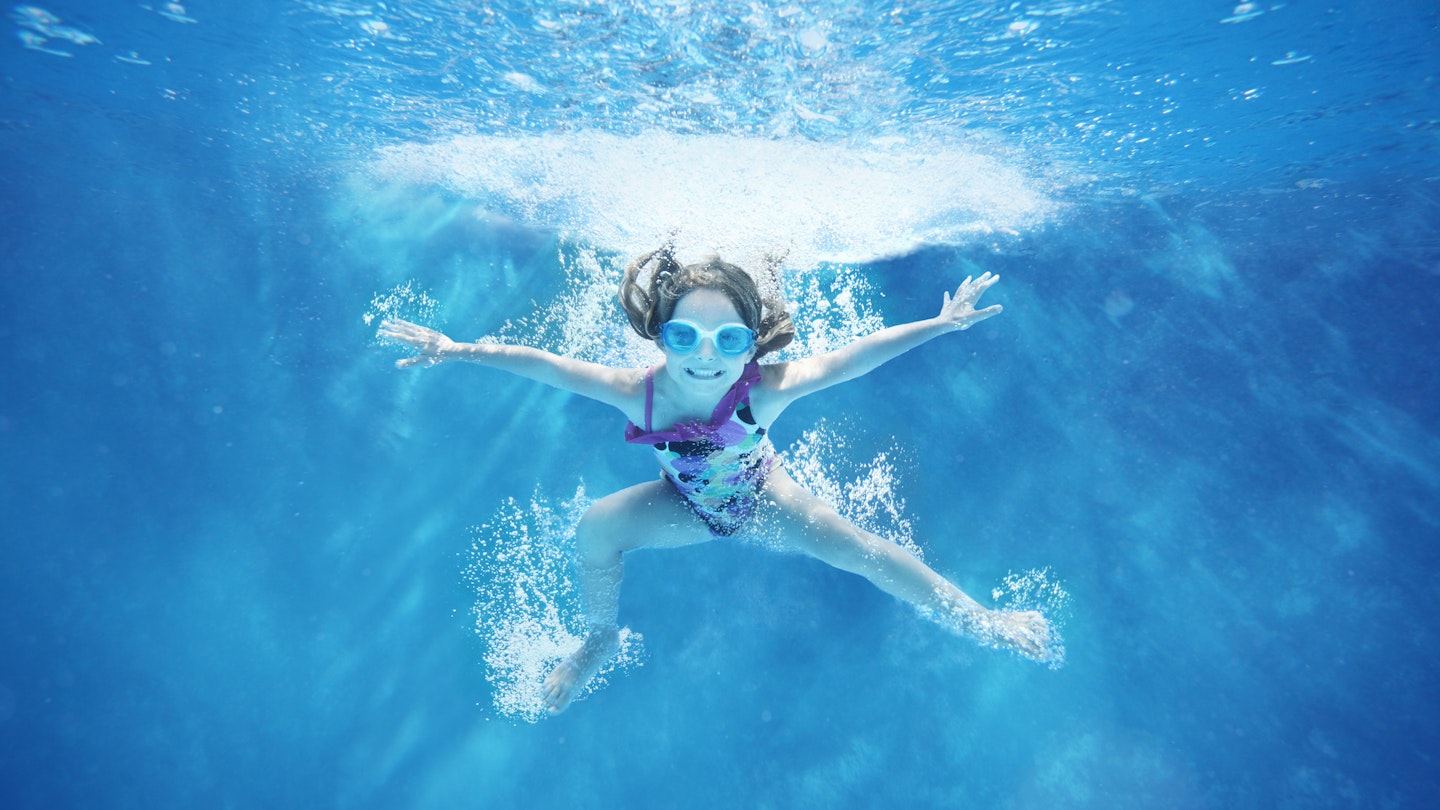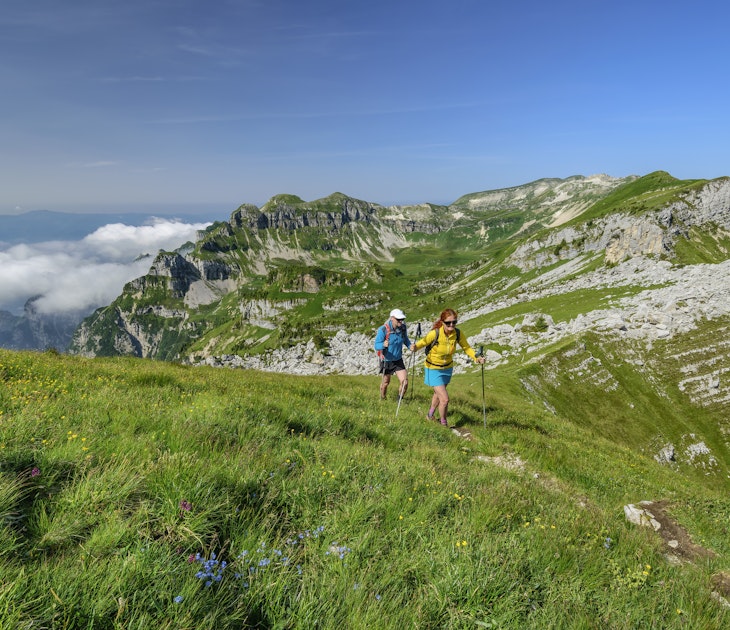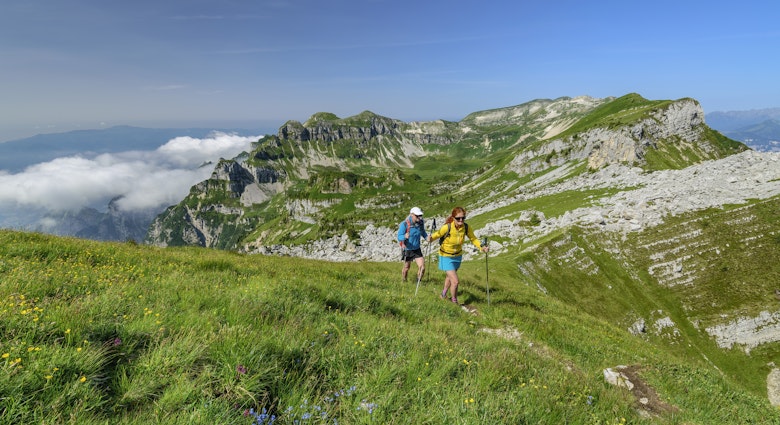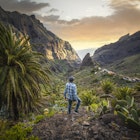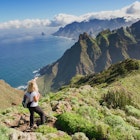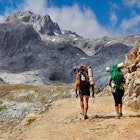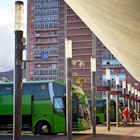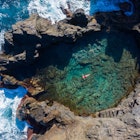Culturally, geographically, and spiritually, Tenerife is a one-off. There is nowhere else in Europe where you swing from cliff-clasped, black-sand beaches battered by Atlantic waves to whale-visited bays, mountain wineries, and time-lost villages that are every bit as lovely as when the Spanish rocked up 500 years ago.
You might bring a tick-list of places you want to visit, but some of your best moments are bound to be the serendipitous ones: Wandering through vineyards and banana plantations that stagger down to the sea; grabbing lunch with locals at an offbeat guachinche (rural pop-up restaurant); or eating boat-fresh fish on an old-town plaza in the blue dusk.
Tenerife’s reputation as a package-vacation party island precedes it, but venture away from the built-up southern resorts and you’ll be surprised. The farther you reach into the wild mountains and fairytale laurel forests of the north, the more you realize this isn’t an island that’s too well-known – rather a place still ripe for discovery.

La Laguna
Best for historic strolls
La Laguna is a knockout. The former Tenerife capital has a staggeringly well-preserved, Unesco-listed historic center that brims with churches, convents, and pastel-painted colonial mansions that pop in bright shades of blue, lemon, green, violet, and orange – all topped off by a fine cathedral. A deliriously colorful and festive city, with one of the island's hottest marcha (nightlife) scenes, La Laguna is like the Havana of the Canaries.
This is no fluke. Founded in 1496, the 16th- to 18th-century Canarian mansions that wrap around courtyards, featuring delicately-carved wooden balconies and oriel windows, were the model for many towns in the Americas. On Calle San Agustín, they line up as if for a permanent photo shoot, including the most fabulous of the lot, Casa del Montañés. Down the same street is the Museo de la Historia de Tenerife, a gloriously rambling, creaky-floored 16th-century mansion that spells out the past in artifacts. For slow Canarian food prepared with organic produce, tapas, and sustainably-brewed island beers, grab a table at Tasca 61.

Parque Nacional del Teide
Best for volcanic landscapes
All eyes are on Teide from the moment you fly into the island. Seen from the plane, this perfectly-etched volcano – Spain’s highest peak at 3715m (12,180ft) – seems to swallow the island whole. The pop-up effect is not lessened when you get closer to its dark summit, which is often wreathed in clouds.
The volcano is the icing on the cake of the 189-sq-km (73-sq-mile), Unesco-listed Parque Nacional del Teide, bang in the heart of the island. The journey up is breathtaking, with Canarian pine and laurel forests giving way to an arid, desert-like moonscape of surreal, rust-red rock formations that blaze in the light of the setting sun. The park’s cinematic backdrops haven’t gone unnoticed: It has appeared in films like Clash of the Titans (2010). Scientists are mad about its Martian landscapes. NASA’s Perseverance Rover, which searched for extraterrestrial life on Mars, was trained here because the climate and landscape were so similar.
The national park is sensational hiking country, whether for a gentle walk around the twisted lava pinnacles of Roques de García, a tough hike up the frozen lava flows of Pico Viejo, or tackling the big one – the full-day climb to Pico del Teide (online reservations only). Hoof it up and you’ll better appreciate the views of La Gomera, La Palma, and El Hierro bubbling up from the Atlantic, but you can also take the cable car.
But as astronomers say, it's by night that the park really shines, and when you cast your eyes to the heavens, this Starlight Destination has some of the darkest, starriest skies in the northern hemisphere with 83 of the 88 recognized constellations visible on crystal-clear nights. Even with the naked eye, you can see the misty band of the Milky Way, but you’ll see more peeking through one of the gigantic telescopes at the Observatorio del Teide or on one of the tours run by Volcano Teide Experience.
La Orotava
Best for Canarian tradition and wine tasting
Winging you back to the early days of Spanish colonization, 16th-century La Orotava sits pretty in a lush valley to the island’s mountainous north, with Teide looming on the horizon. Its tangle of cobbled streets and flower-dotted plazas are instantly endearing and the atmosphere is wholly Canarian (no tourist tat here).
For a true flavor of the town, kick off with a wander along architecturally striking Calle San Francisco, where beautifully preserved 17th-century mansions are festooned with ornately carved balconies. Top billing goes to the Casa de los Balcones, with a lovely courtyard cafe where you can grab a coffee before continuing to nearby Casa Lercaro, with its baroque wooden gallery and palm-filled courtyard.
La Orotava is less about randomly ticking off sights and more about getting a slice of local life. Hang out at one of the old-fashioned tascas (bars) for drinks, tapas, and dominoes or buy hand-milled gofio (flour made from toasted grains) at La Maquina. Visitors can also arrange a vineyard tour and tasting (try Bodegas Tajinaste) and then pin down a nearby guachinche for a simple, dirt-cheap feast with local wine. For a charming boutique sleep in a 17th-century mansion, book into Hotel Victoria.
The Orotava Valley is Tenerife’s fruit basket, with banana plantations and vineyards clambering up its slopes. The wines here are largely refreshing whites, made with the Listán Blanco grape, and vines are braided the traditional way (a technique known as cordón trenzado). It’s gorgeous hiking country, with a web of trails dipping into fragrant Canarian pinewoods and views sweeping down to the coast.

Garachico
Best for old-school Canary charm
Ask locals for a slice of genuine Canarian life and they will likely direct you toward Garachico on the north coast. Everyone has a soft spot for the historic streets of this charismatic town, battered by the fizzing surf of the Atlantic – but boy has it been through the wars. In the 17th century, it boomed as the home of wealthy merchants exporting Malmsey wine, but a huge volcanic eruption in 1706 wiped out its port and buried the town in lava. Freak floods, storms, fires, and a plague of locusts – real Old Testament stuff – have also ravaged Garachico over the centuries.
Today it’s a delightfully low-key base for exploring the north coast, with cobbled lanes, beautifully preserved 16th- and 17th-century colonial mansions, convents, monasteries, and churches to explore. Wander the waterfront where fishers cast their lines to the sea-gazing fortress of Castillo de San Miguel, whose museum throws you in at the deep end of Garachico’s history. Framed by lofty palms and Indian laurel trees, nearby Plaza Libertad buzzes with kids playing, couples strolling, and old men in cafes whiling away afternoons over drinks and dominoes. If you want to swim, head for the natural lava pools at El Caletón.
High above it all, Mirador de Garachico cracks open the view along the coast and has a bar serving local wine and putting creative riffs on Canarian ingredients. Back in town, you’ll sleep sweetly in the lovingly-restored, 16th-century mansion Hotel La Quinta Roja.
Los Gigantes
Best for diving and cliff drama
Hugging Tenerife’s western shores, where the island’s highest cliffs drop abruptly into the wave-lashed, blue Atlantic, Los Gigantes delivers plenty of drama, but far fewer crowds than you’ll find swarming around south coast resorts. Indeed, this low-rise, white-washed town is nicely chilled with a seafront promenade, the dusky volcanic sands of Playa de la Arena, and fiery sunsets that backlight La Gomera.
You’re here, of course, for the giants: The basalt cliffs of Acantilados de los Gigantes, which punch 600m (1960ft) above the frothing ocean. For the best views from above, walk to the end of Calle Tabaiba to a natural lookout point.
For the full-on effect of the cliffs looming above you, nothing beats heading out on the water by kayak or stand-up paddleboard with Teno Activo. The submerged base of the cliffs teems with marine life, making this one of the island’s diving hotspots. Los Gigantes Diving Centre plunges into the deep blue to find stingrays, barracuda, and turtles swirling between the volcanic arches and caverns.
In 2021, Tenerife’s west coast was declared Europe’s first Unesco Whale Heritage Site. Its mild climate makes it one of the world’s best places for whale watching. Conservation-focused tours, such as those led by CB Marítima Acantilados, practically guarantee sightings of pilot whales at close quarters, as well as dolphins, porpoises, and – if you are incredibly lucky – a blue whale or an orca.

Puerto de la Cruz
Best for black-sand bays and botanical gardens
Strung along a rocky shoreline and necklaced with volcanic bays, Puerto de la Cruz is one of Tenerife’s most liveable and loveable resorts, thanks to its easygoing charm, buzzing cafe scene, plazas, and parks. The Victorians raved about its spas, and there’s still a dash of that languor in the air today, thanks to a boardwalk for strolling, a luxurious spa enveloped in tropical gardens at Hotel Botánico, and the remarkable Jardín Botánico, with its jungle of Canarian plants and flowers, one-off palm collection, and 200-year-old Australian Moreton Bay fig.
A dive into the town’s historic center should begin at the bronze statue of the fisherwoman at Playa del Muelle, where La Cofradía de Pescadores dishes up fresh seafood. It’s paces away from the grand, palm-rimmed central square Plaza Charco (“Puddle Plaza”), so named because it used to flood every time a storm blew in. From here, lose yourself in the tangle of lanes in the old fishing district of La Ranilla, now a hip-and-happening quarter, where cottages have been reborn as artsy-cool bars and restaurants, like Agora, with a pretty terrace out front for vinos and tapas.
Beach-wise, Playa Martiánez wins, with its arc of dark sand and gentle waves ideal for getting to grips with surfing. But if you prefer your swims with a dash more style, check out the vast saltwater pools at Lago Martiánez, the volcanic rock vision of late Spanish artist, sculptor, and architect César Manrique.
Parque Rural del Teno
Best for mountain highs
Shaggy mountains thrust up above orchards, terraces, and valleys on the island’s northwestern tip, where the volcanic cliffs of Parque Rural de Teno rear up above the raging ocean like a dragon’s backbone. It’s a corner of the island that is still deliciously off the radar, with a dawn-of-creation beauty about it. The area is spectacularly biodiverse, carpeted with laurel and beech forests and strawberry trees that the endangered laurel pigeon and spotted lizard both love.
On the rocky headland at Punta de Teno, where a lonely lighthouse stands, you can feel the full force of nature, with Atlantic waves battering a black-sand beach and jagged mountains rippling into the distance. The sunsets are worth lingering for. The road is restricted (no private cars during daylight hours or on the weekends), but you can get here by taxi, bike, or taking bus 369 from Buenavista del Norte.
The TF-436 road that corkscrews dizzyingly up to Masca acts as a drumroll for the insanely photogenic village, clinging to a mountaintop for dear life and with a great fang of rock protruding above it. Grab a bowl of cactus-flavored ice cream with palm honey at one of the local cafes before embarking on one of Tenerife’s most phenomenal hikes down the Barranco de Masca ravine to the ocean – providing you have a permit, that is.
Santa Cruz de Tenerife
Best for carnival and culture
Though often overlooked by travelers in the mad dash to the coast, the capital Santa Cruz de Tenerife really is the island’s beating heart. If you need proof, visit during February’s Carnaval, a feast of all-night fiestas, parades of sparkly costumes, and Latino-style hip-wiggling second only to Rio de Janeiro.
Culturally, Santa Cruz has the edge. It has some unmissable historic sights like Iglesia de Nuestra Señora de la Concepción, originally built in 1498 just after the city was conquered, with its intricately wrought wooden Mudéjar (Islamic-style architecture) ceilings. But the city’s real showstoppers are more contemporary. The strikingly angular, light-flooded Tenerife Espacio de las Artes (TEA), bearing the minimalist hallmark of Pritzker Prize-winning architects Herzog & de Meuron, presents an exciting roster of exhibitions of up-and-coming Spanish art. The city has its own Sydney Opera House in the form of Auditorio de Tenerife, a crashing white wave of an auditorium, famed for both Santiago Calatrava’s architecture and its acoustics. If you can’t catch a concert, join a guided tour of the building or go for a drink in the lobby cafe.
It’s a joy to also just wander the city’s parks, plazas, and streets, where you might happen upon a sculpture by Henry Moore or Joan Miró, hang out on a cafe terraza (terrace) on Plaza Candelaria or find picnic fixings at Mercado de Nuestra Señora de África. With its Islamic-style arches and patios, and stalls heaving with fresh fruit and vegetables, fish, wine, and local cheese, the market is your backstage pass to local life, especially in the morning as people wake up over churros and coffee.

